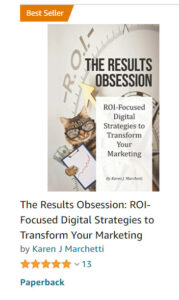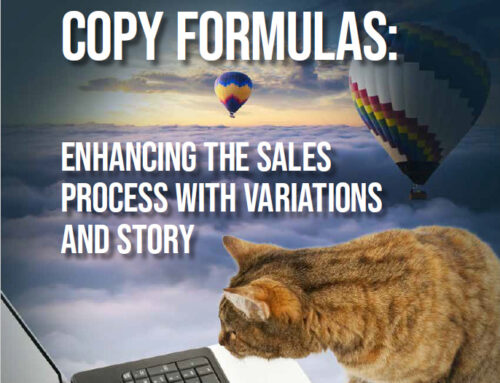“Gee, that sales copy isn’t even grammatically correct . . .”
Good copy is written the way people speak. Most of us usually speak in simple language. And usually in relatively short sentences.
That type of copywriting is very easy to get through for the average reader.
However . . . our speech is not always grammatically correct — even though it may sound perfectly fine . . .
Many times, people will start sentences with the word “and” or “but” or “because” when speaking. Although those types of sentences aren’t grammatically correct, they make for much easier reading when used in copy.
Starting sentences with “and” or “but” helps the copy to “flow”
Sentences that begin with these “connector” words —like “and”, “but”, or “because” — tend to make the writing much “friendlier”. They keep the reader reading.
(This is one reason why testimonials get such high readership. Most testimonials are written in simple, easy-to-get-through language — they’re written just the way the person would say it to you face-to-face.)
So before you accept your computer’s suggestions for grammar fixes, read the sentence out loud. If it reads exactly the way you’d likely say it out loud, leave the words as they are.
Effective sales copy should be friendly, but audience-appropriate
Herschell Gordon Lewis in the Art of Writing Copy advises “clarity but not illiteracy”. We want the copy to be clear and friendly, but not illiterate. He cites this example:
- Replace “This is the information you requested” with “This is the information you asked for”. Even though the sentence ends with a preposition (which isn’t grammatically correct), Lewis believes the second version is not only clearer, but also less condescending, less pompous, and much more positive. (When’s the last time you actually said the word “requested” in normal conversation?)
Too many marketing efforts (especially websites, brochures, and direct mail packages) sound like the copywriter was trying too hard to be “professional.” Lots of perfectly constructed, complete sentences. Unfortunately, that style of copy doesn’t SELL. And that’s one reason why a lot of sales copy generates very poor results.
If the words don’t read the way you’d ever say them out loud, revise, revise, revise . . . and don’t worry if you have to break some grammar rules in the process. Clear and friendly copy that gets read is always preferable to stuffy copy that’s ignored.
What if your boss doesn’t agree?
Have you run into a boss (or client) who disagrees with copy that includes sentences starting with “and” or “but” or “because”?
When I had my first full-time marketing job as marketing specialist for a local credit union (5 branches!), a new COO became my boss. And he took his red pen and marked up every sentence that started with “and” or “but” or “because.” At the time, I didn’t have the words to effectively discuss his suggestions. But I should have said something like,
“I appreciate your comments. Could we discuss them? If we were writing for a newspaper or magazine, where readers were there specifically to read, you’re right — grammatically correct sentences would be best.
But in our case, we’re writing sales copy. Our challenge is to persuade while keeping the reader reading. Those ‘connector’ words are there specifically for that purpose: to keep the reader reading, to smooth the transition between sentences, and make the copy sound ‘friendly’ — exactly the way you or I would say it to the prospect. And you’ll find it’s common for sentences to begin with ‘and’ or ‘but’ or ‘because’ in newspaper ads, magazine ads, or direct mail. Would it help if I showed you some examples where the copy is designed to sell?”
(He may have said, “No, I want the copy this way.” No problem, that’s the boss’s prerogative. But at least I could have planted the seed that sales copy uses different writing techniques than magazine or newspaper articles. And perhaps over time, who knows how his beliefs might change . . .)
 Excerpted from the copywriting chapters in our new BEST SELLER, “The Results Obsession: ROI-Focused Digital Strategies to Transform Your Marketing,” now available on Amazon.
Excerpted from the copywriting chapters in our new BEST SELLER, “The Results Obsession: ROI-Focused Digital Strategies to Transform Your Marketing,” now available on Amazon.
Learn more about The Results Obsession book and see the Table of Contents.
Includes chapters on Messaging Strategy (including three main approaches, 7 emotional drivers, and more), Characteristics of Great Copy, Writing Website Copy, Writing Email Copy, and more.






Leave A Comment